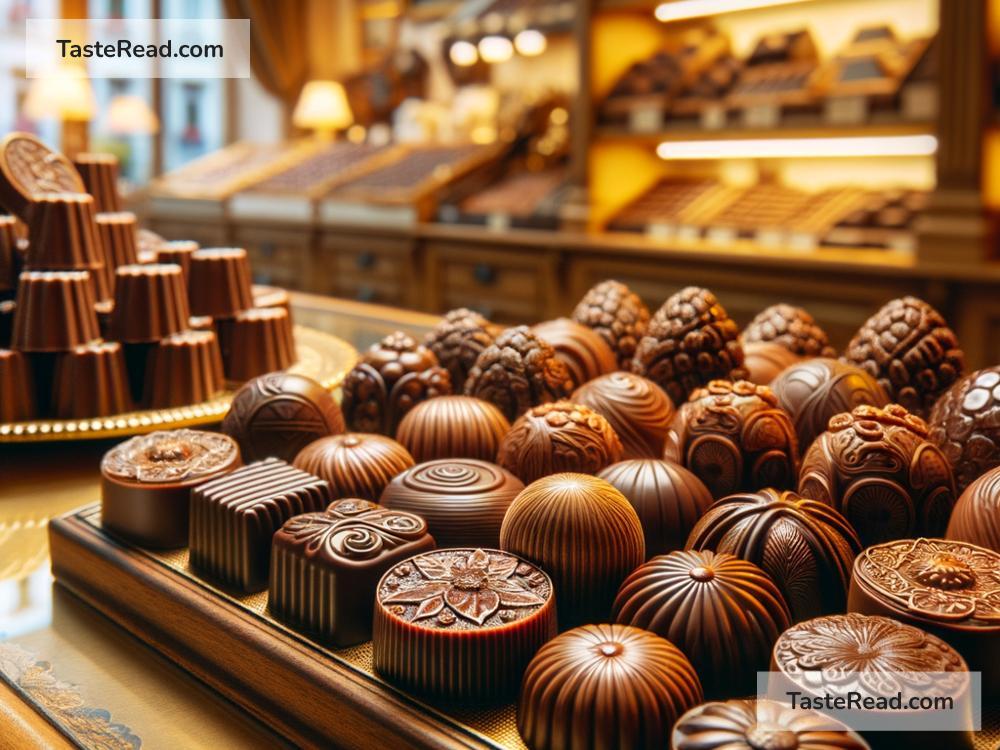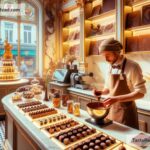Indulging in Exquisite Cocoa Creations from Artisan Chocolatiers in Belgium
When you think of chocolate, one country probably comes to mind: Belgium. Known as the world’s chocolate capital, Belgium offers some of the most delightful chocolate creations you will ever taste. The country’s long-standing tradition in crafting fine chocolates has earned it a reputation among chocolate lovers everywhere. Belgian chocolatiers don’t just make chocolate; they create edible works of art that make your taste buds sing. Let’s explore why Belgian chocolate is so special and how artisan chocolatiers in Belgium take indulgence to an entirely new level.
Belgium’s Chocolate History
Belgium’s love affair with chocolate dates back to the 17th century. It was introduced to the country through trade routes, and the Belgians quickly embraced this sweet treat. By the 19th century, Belgium became known for its skills in chocolate-making, and innovations like the creation of pralines helped cement its reputation.
Pralines, a Belgian invention, are bite-sized chocolates filled with delicious surprises like cream, nuts, or fruit ganache. Jean Neuhaus, a Belgian chocolatier, created pralines in 1912. Neuhaus also introduced the first chocolate box, allowing chocolates to be transported safely while adding a luxurious touch. These milestones marked the beginning of Belgium’s chocolate legacy.
Belgian Chocolate: What Makes It Special?
What makes Belgian chocolate stand out is the sheer commitment to quality. Belgian chocolatiers use high-grade cocoa beans sourced from around the world. These beans are carefully roasted and ground into a smooth cocoa paste. The process is detailed and precise to maximize the flavor and texture of the chocolate. Belgian law even regulates the chocolate-making process, ensuring that all products contain at least 35% pure cocoa—higher than many other countries’ standards.
Another key factor is the craftsmanship. Many Belgian chocolatiers still stick to traditional methods while continuously experimenting with flavors and designs. The result is chocolate that is rich, decadent, and simply irresistible.
Artisan Chocolatiers: Masters of Cocoa Creations
Belgium is home to hundreds of artisan chocolatiers—masters who take chocolate-making to the level of art. They are not merely crafting a sweet treat; they are creating an experience. These chocolatiers pay attention to every detail, from the blend of ingredients to the aesthetic of the final product.
When you walk into an artisan chocolate shop in Belgium, you are greeted by rows of elegant, handcrafted chocolates. Each piece is unique, often resembling little jewels or sculptures. It’s not unusual to find chocolates shaped like flowers, seashells, or intricate geometric patterns. Artisan chocolatiers also experiment with unexpected flavors like lavender, chili, or salted caramel, offering an exciting twist to the traditional chocolate taste.
Where to Find Belgian Artisan Chocolates
If you’re in Belgium, finding artisan chocolate shops is easy because they are everywhere! Here are a few places and chocolatiers to visit:
-
Brussels: Belgium’s capital city is packed with chocolate shops. Visit famous names like Neuhaus, Pierre Marcolini, and Leonidas for a wide variety of pralines and other chocolate delicacies.
-
Bruges: This picturesque city isn’t just known for its canals; it’s also a haven for chocolate lovers. Shops like The Chocolate Line will surprise you with innovative and visually stunning creations.
-
Antwerp: Antwerp has its own set of artisan chocolatiers, including Dominique Persoone, known as “The Shock-O-Latier” for his unconventional chocolate combinations.
No matter where you go, you’ll find unique creations that make you fall in love with chocolate all over again.
Must-Try Chocolate Treats
While visiting artisan chocolatiers in Belgium, make sure to try some iconic chocolate treats:
-
Pralines: The classic filled chocolates that started it all. A bite into a praline feels like opening a tiny treasure chest.
-
Truffles: Soft and creamy delights, often dusted with cocoa powder or coated in rich chocolate.
-
Chocolate Bars: Don’t underestimate the simplicity of a high-quality Belgian chocolate bar. It’s perfect for appreciating the pure taste of Belgian cocoa.
-
Hot Chocolate: Pair a cup of Belgian hot chocolate with your pralines for the ultimate indulgence.
-
Novelty Chocolates: Some artisan chocolatiers create chocolates shaped like objects—heels, handbags, or even musical instruments. These are as fun to look at as they are to eat.
Chocolate Trails and Experiences
Many cities in Belgium offer chocolate tours where you can visit several artisan chocolatiers and sample their creations. Some workshops allow you to step into the role of a chocolatier and learn how to craft your own chocolates. Imagine making your own praline and enjoying it fresh!
Bringing Belgian Chocolate Home
If you can’t get enough, take some Belgian chocolates home with you. Most artisan chocolatiers have packaging designed to keep the chocolates fresh and intact during travel. Trust us, your family and friends will thank you when you share these luxurious treats.
Conclusion
Belgian chocolate is more than just food; it’s an experience, a tradition, and a masterpiece. Artisan chocolatiers in Belgium dedicate their time and passion to creating chocolates that are as visually stunning as they are delicious. Whether you’re sampling pralines, sipping hot chocolate, or admiring chocolate creations in elegant shops, indulging in Belgian chocolates is a sensory journey you’ll never forget.
So, pack your bags and treat yourself to the finest cocoa creations Belgium has to offer. One bite, and you’ll understand why Belgian chocolate is truly in a league of its own.


